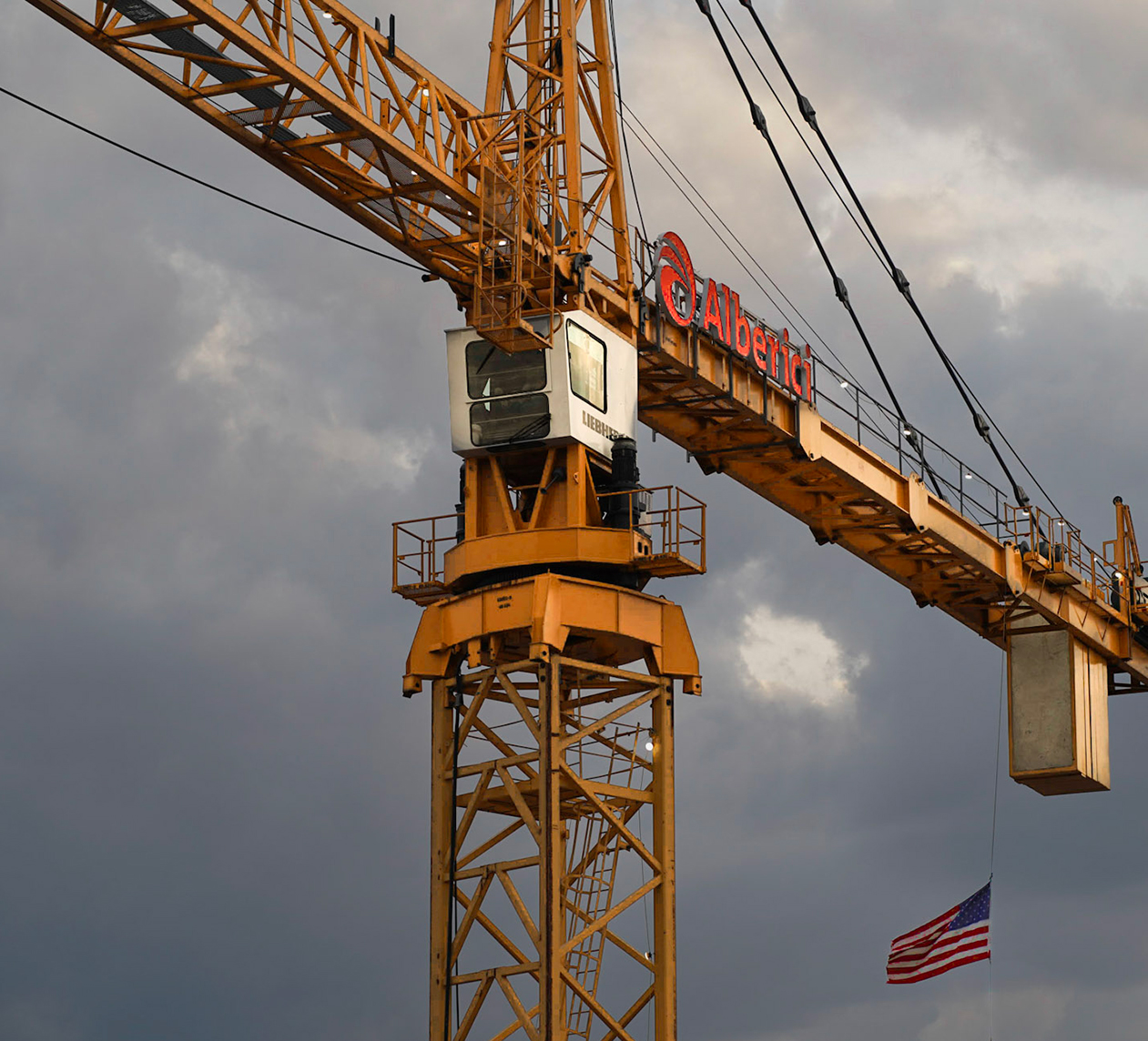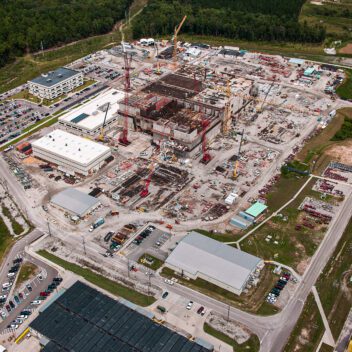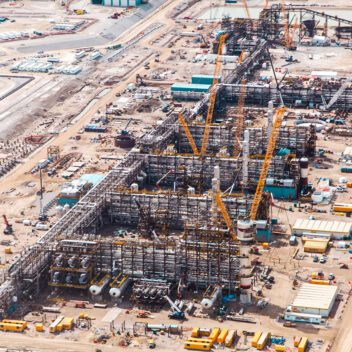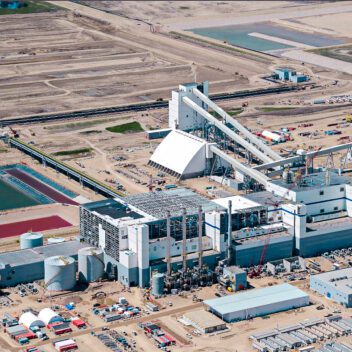Rehabbing and excavating a precious-metal mine to discover cosmic ‘gold’
Market
Heavy Industrial
Key Services
Construction
Preconstruction
Self-Perform
Strategic Partnerships
Virtual Design & Construction
Delivery Method
General Contracting (GC)Capacity
875,000 tonsThe challenge
To unlock the mysteries of the cosmos, the U.S. Department of Energy’s Office of Science developed the Deep Underground Neutrino Experiment (DUNE), part of an international endeavor to enhance scientific understanding of the role neutrinos play in the universe.
The Long-Baseline Neutrino Facility will support the experiment, housing sensitive equipment that measures neutrinos from space and those beamed through 800 miles of earth from a DUNE facility in Batavia, Illinois.
Alberici is excavating 875,000 tons of rock — in effect, carving a series of caverns through which massive neutrino detectors will travel to their permanent homes. They will live at different depths beneath the Sanford Underground Research Facility. The lowermost “far” detector is the largest of its type ever built and composed of four modules, each as tall and wide as a four-story building and as long as a football field. The modules will be assembled nearly a mile underground.
Our scope consists of two initial phases. During the first phase, we prepped a closed gold mine for major excavation by refurbishing the existing tramway and ore passes (mine shafts for removing material). The second phase consists of excavation as well as building site and infrastructure.

Key Facts
Construction occurring nearly a mile underground
Excavation of 875,000 tons of rock
Challenge met
The first phase consisted of three major activities: reopening of two ore passes that connect to the main mine shaft; reinforcement of the main mine shaft’s headframe, which will carry material, equipment and people; and rebuilding of the tramway tunnel and conveyor system through the main mine shaft. It conveys excavated rock to an open pit mining area excavated in the 1980s.
Originally constructed in the 1930s, the existing headframe required substantial steel reinforcement. It will be used to hoist tons of waste rock during excavation, and it will transport workers, researchers, and equipment during all future LBNF/DUNE activities.
Alberici reinforced the headframe with nearly 1,000 pieces of steel, including new side panels, crash beams and high strength bolts. We refurbished the existing tramway that occupies a 2,500-foot tunnel roughly 10 feet wide and 11 feet tall. To reopen ore passes, we mucked out 1,700 cubic yards of space that had been filled in since the passes were last used for mining operations in 2001.
During the current phase, we are excavating three underground chambers, each roughly 60 by 90 by 600 feet, using drill-and-blast excavation techniques. Prior to cavern excavation, we widened the existing underground tunnels, called drifts, and created a ¼-mile vertical ventilation shaft.
To create this shaft, Thyssen Mining, a subcontractor to Alberici, used a state-of-the-art technique called raise-bore drilling, and the bored material was removed using the refurbished tramway.








